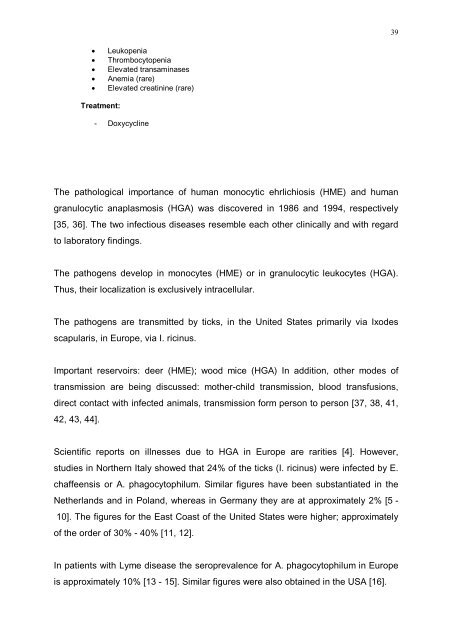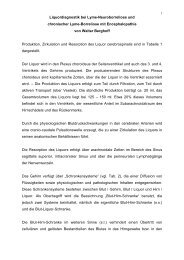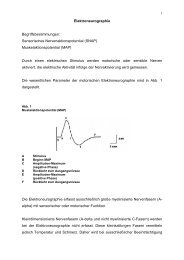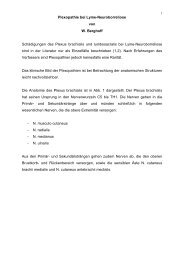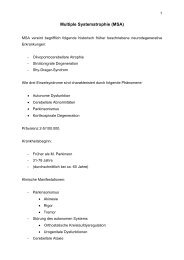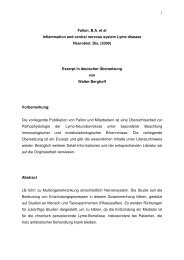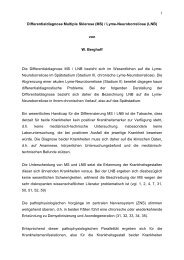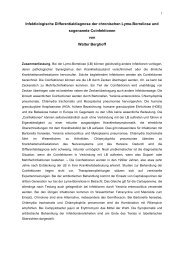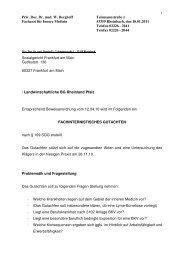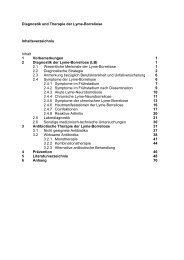Infectiologic differential diagnosis of chronic Lyme disease and so ...
Infectiologic differential diagnosis of chronic Lyme disease and so ...
Infectiologic differential diagnosis of chronic Lyme disease and so ...
You also want an ePaper? Increase the reach of your titles
YUMPU automatically turns print PDFs into web optimized ePapers that Google loves.
� Leukopenia<br />
� Thrombocytopenia<br />
� Elevated transaminases<br />
� Anemia (rare)<br />
� Elevated creatinine (rare)<br />
Treatment:<br />
- Doxycycline<br />
The pathological importance <strong>of</strong> human monocytic ehrlichiosis (HME) <strong>and</strong> human<br />
granulocytic anaplasmosis (HGA) was discovered in 1986 <strong>and</strong> 1994, respectively<br />
[35, 36]. The two infectious <strong>disease</strong>s resemble each other clinically <strong>and</strong> with regard<br />
to laboratory findings.<br />
The pathogens develop in monocytes (HME) or in granulocytic leukocytes (HGA).<br />
Thus, their localization is exclusively intracellular.<br />
The pathogens are transmitted by ticks, in the United States primarily via Ixodes<br />
scapularis, in Europe, via I. ricinus.<br />
Important reservoirs: deer (HME); wood mice (HGA) In addition, other modes <strong>of</strong><br />
transmission are being discussed: mother-child transmission, blood transfusions,<br />
direct contact with infected animals, transmission form per<strong>so</strong>n to per<strong>so</strong>n [37, 38, 41,<br />
42, 43, 44].<br />
Scientific reports on illnesses due to HGA in Europe are rarities [4]. However,<br />
studies in Northern Italy showed that 24% <strong>of</strong> the ticks (I. ricinus) were infected by E.<br />
chaffeensis or A. phagocytophilum. Similar figures have been substantiated in the<br />
Netherl<strong>and</strong>s <strong>and</strong> in Pol<strong>and</strong>, whereas in Germany they are at approximately 2% [5 -<br />
10]. The figures for the East Coast <strong>of</strong> the United States were higher; approximately<br />
<strong>of</strong> the order <strong>of</strong> 30% - 40% [11, 12].<br />
In patients with <strong>Lyme</strong> <strong>disease</strong> the seroprevalence for A. phagocytophilum in Europe<br />
is approximately 10% [13 - 15]. Similar figures were al<strong>so</strong> obtained in the USA [16].<br />
39


